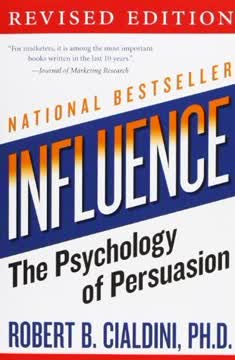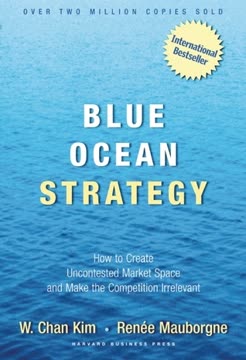Key Takeaways
1. Marketing is about creating customer value to capture value in return.
The twofold goal of marketing is to attract new customers by promising superior value and to keep and grow current customers by delivering value and satisfaction.
Value exchange. At its core, marketing is the process by which companies engage customers, build strong relationships, and create value for them. This isn't just about making a sale; it's about satisfying needs and building loyalty. In return for the value provided, companies capture value back from customers in the form of sales, profits, and long-term customer equity.
Beyond selling. Many people mistakenly think of marketing as just selling and advertising. While these are parts of the marketing mix, they are merely tools to achieve a larger goal: making selling unnecessary by truly understanding and satisfying customer needs. If you create superior value, products will sell themselves.
Customer focus. Successful companies, like Emirates or Apple, are deeply customer-focused. They understand that marketing starts with identifying customer needs and building relationships based on delivering value. This customer-centric approach is the foundation for all effective marketing strategies and actions.
2. Understanding customers and the marketplace is the foundation for marketing strategy.
As a first step, marketers need to understand customer needs and wants and the marketplace in which they operate.
Core concepts. Effective marketing begins with a deep understanding of five core marketplace concepts:
- Needs, wants, and demands: Human needs are states of felt deprivation; wants are needs shaped by culture; demands are wants backed by buying power.
- Market offerings: Products, services, information, or experiences that satisfy needs and wants. Avoid marketing myopia by focusing on the benefits and experiences, not just the product itself (e.g., Disney sells experiences, not just rides).
- Value and satisfaction: Customers choose offerings based on perceived value and satisfaction, leading to repeat purchases and positive word-of-mouth.
- Exchanges and relationships: Marketing involves obtaining desired objects by offering something in return, building profitable exchange relationships.
- Markets: The set of actual and potential buyers who share a need or want.
Insight is key. Companies must go to great lengths to research and understand these concepts, analyzing data and observing customers to gain fresh, deep insights into their motivations and behaviors. This understanding informs every subsequent marketing decision.
3. Designing a customer-driven strategy involves segmenting, targeting, differentiating, and positioning.
To design a winning marketing strategy, the marketing manager must answer two important questions: What customers will we serve (what’s our target market)? and How can we serve these customers best (what’s our value proposition)?
Strategic choices. Once the market is understood, companies must decide who to serve and how. This involves four key steps:
- Market segmentation: Dividing the market into distinct groups of buyers with different needs or characteristics (e.g., geographic, demographic, psychographic, behavioral).
- Market targeting: Evaluating segment attractiveness and selecting one or more to enter. Companies choose segments they can serve best and most profitably (e.g., Nordstrom targets affluent professionals, Dollar General targets those with modest means).
- Differentiation: Actually differentiating the market offering to create superior customer value (e.g., QuickenLoans offers speedy online mortgage approval).
- Positioning: Arranging for the market offering to occupy a clear, distinctive, and desirable place in the minds of target consumers relative to competitors (e.g., BMW is "The Ultimate Driving Machine").
Value proposition. The chosen differentiation and positioning define the brand's value proposition – the set of benefits it promises to deliver to satisfy needs. This answers the crucial question: "Why should I buy your brand rather than a competitor's?"
4. The marketing mix (Product, Price, Place, Promotion) brings the strategy to life.
The marketing mix is the set of tactical marketing tools that the firm blends to produce the response it wants in the target market.
Tactical tools. The marketing strategy outlines which customers to serve and how to create value. The marketing mix is the set of tools used to implement this strategy and deliver the intended value. These tools are often categorized as the four Ps:
- Product: The goods-and-services combination offered to the target market, including features, design, quality, branding, and packaging (e.g., a Ford Escape with its warranty and features).
- Price: The amount customers pay to obtain the product, including list price, discounts, allowances, and credit terms (e.g., negotiating the price of a car).
- Place: Company activities that make the product available to target consumers, including distribution channels, coverage, and logistics (e.g., Ford partnering with dealers).
- Promotion: Activities that communicate the merits of the product and persuade target customers to buy, including advertising, personal selling, sales promotion, public relations, and direct/digital marketing (e.g., Ford's advertising and dealer promotions).
Integrated program. The firm must blend these Ps into a comprehensive, integrated marketing program that communicates and delivers the chosen value proposition to target customers. Some view this from the buyer's perspective as the four As: Acceptability, Affordability, Accessibility, and Awareness.
5. Building strong customer relationships and engagement is the ultimate goal.
The first three steps in the marketing process... all lead up to the fourth and most important step: engaging customers and managing profitable customer relationships.
Relationship management. Customer relationship management (CRM) is the process of building and maintaining profitable customer relationships by delivering superior value and satisfaction. Satisfied customers are more likely to be loyal and advocate for the brand. Outstanding companies aim to delight customers by exceeding expectations (e.g., L.L.Bean's legendary customer service).
Digital engagement. The digital age has transformed relationships. Customer-engagement marketing fosters direct, continuous customer involvement in shaping brand conversations, experiences, and community (e.g., Innocent Drinks' humorous social media interactions). This leads to customer-managed relationships and brand advocacy.
Partnering. Companies cannot build relationships alone. Partner relationship management involves working with others inside (value chain) and outside (value delivery network) the company to jointly engage customers and deliver value (e.g., Walmart depends on suppliers for low costs).
6. Managing marketing information is essential for gaining customer insights.
The real value of marketing information lies in how it is used—in the customer insights that it provides.
Information overload. Today's "big data" environment means companies are awash in information from countless sources (transactions, social media, IoT devices). The challenge isn't collecting data, but turning it into actionable customer and market insights.
Marketing Information System (MIS). An MIS helps assess information needs, develop needed information, and help users gain insights. Information comes from:
- Internal databases: Customer and market data from within the company (e.g., Stitch Fix uses customer data for personalized styling).
- Competitive marketing intelligence: Monitoring publicly available information about competitors and the marketplace (e.g., Mastercard's Conversation Suite monitors online buzz).
- Marketing research: Formal studies for specific situations (e.g., surveys, experiments, online tracking).
Analytics and AI. Companies use marketing analytics and artificial intelligence (AI) to dig out meaningful patterns in big data and apply insights (e.g., Netflix uses AI to personalize recommendations). This helps manage customer relationships (CRM) and improve decision making.
7. Understanding consumer and business buyer behavior is key to effective marketing.
Buying behavior is never simple, yet understanding it is an essential task of marketing management.
Consumer behavior. Consumer purchases are influenced by:
- Cultural factors: Culture, subculture (e.g., Hispanic, African American, Asian American consumers), social class.
- Social factors: Groups, social networks, family, roles, status.
- Personal factors: Age, life stage, economic situation, lifestyle, personality, self-concept.
- Psychological factors: Motivation (e.g., Maslow's hierarchy), perception, learning, beliefs, attitudes.
Consumer decision process. Buyers go through stages: need recognition, information search, alternative evaluation, purchase decision, postpurchase behavior (e.g., cognitive dissonance). Marketers must understand and influence this process and the broader customer journey.
Business buyer behavior. Business markets differ from consumer markets in structure (fewer, larger buyers), demand (derived, inelastic, fluctuating), buying unit (more participants, professional effort), and decisions (more complex, formalized). Business buying is influenced by environmental, organizational, interpersonal, and individual factors. The process involves problem recognition, need description, product specification, supplier search, proposal solicitation, supplier selection, order specification, and performance review. E-procurement and B-to-B digital marketing are transforming this process.
8. Products, services, and brands are built on creating customer value and experiences.
Product planners need to think about products and services on three levels... Each level adds more customer value.
Product levels. Products are more than just tangible goods. They are bundles of benefits. Planners consider:
- Core customer value: The basic problem-solving benefits or experiences sought (e.g., hope from lipstick, freedom from a Harley).
- Actual product: Features, design, quality, brand name, packaging (e.g., a Harley's styling, sound, parts).
- Augmented product: Additional services and benefits (e.g., warranty, repair services, H.O.G. membership).
Classifications. Products are classified as consumer (convenience, shopping, specialty, unsought) or industrial (materials, capital items, supplies). Marketers also consider organizations, persons, places, and ideas (social marketing).
Branding. Brands are powerful assets representing consumer perceptions and feelings. High brand equity (positive consumer response) leads to brand value. Building strong brands involves positioning (attributes, benefits, values), name selection, sponsorship (national, store, licensed, co-branding), and development (line/brand extensions, multibrands, new brands). Brands are built through customer experiences, not just advertising (e.g., Payless stunt showed brand power).
9. Effective distribution channels and logistics deliver customer value efficiently.
From the economic system’s point of view, the role of marketing intermediaries is to transform the assortments of products made by producers into the assortments wanted by consumers.
Value delivery network. Companies work with suppliers and channel partners (wholesalers, retailers) in a value delivery network to make products available. Intermediaries add value by bridging time, place, and possession gaps, performing functions like information, promotion, contact, matching, negotiation, physical distribution, financing, and risk taking.
Channel organization. Channels are behavioral systems. Conflict can arise (horizontal or vertical). Vertical marketing systems (VMS) provide leadership:
- Corporate VMS: Single ownership (e.g., EssilorLuxottica owns brands and retail chains).
- Contractual VMS: Firms join by contract (e.g., franchises like McDonald's).
- Administered VMS: Leadership by size/power (e.g., Walmart's influence on suppliers).
Trends. Horizontal marketing systems (companies at one level join forces, e.g., airline alliances) and multichannel distribution (using multiple channels) are growing. Disintermediation (cutting out intermediaries, e.g., online music sales displacing stores) is a major trend.
Logistics. Marketing logistics (physical distribution) manages the flow of goods from origin to consumption. It includes inbound, outbound, and reverse logistics. Goals are to provide targeted service at least cost, managing warehousing, inventory, transportation, and information. Integrated logistics management requires teamwork across functions and partners. Sustainable supply chains are increasingly important.
10. Integrated marketing communications deliver a clear, consistent, and compelling message.
Under this concept... the company carefully integrates its many communication channels to deliver a clear, consistent, and compelling message about the organization and its brands.
Promotion mix. The promotion mix is the blend of tools used to engage customers and communicate value:
- Advertising: Paid nonpersonal promotion (e.g., TV, online ads).
- Sales promotion: Short-term incentives (e.g., coupons, contests).
- Personal selling: Personal interactions by sales force.
- Public relations (PR): Building good relations with publics (e.g., publicity, events).
- Direct and digital marketing: Engaging directly with targeted individuals (e.g., email, social media, mobile).
Changing landscape. The communications environment is shifting from mass media to a richer mix of targeted, interactive digital media. Consumers are more empowered and create their own content. Marketers are becoming content marketing managers across paid, owned, earned, and shared media (POES).
IMC. Companies must integrate their communication channels to avoid conflicting messages. IMC ensures consistency across all customer touch points (e.g., Land Rover's "Above and Beyond" campaign). Effective communication involves identifying the audience, setting objectives (awareness, appeal, ask, act, advocacy), designing messages (content, structure, format), choosing media (personal/nonpersonal), selecting sources, and collecting feedback.
11. Creating competitive advantage requires analyzing competitors and positioning effectively.
Building profitable customer relationships and gaining competitive advantage require delivering more value and satisfaction to target customers than competitors do.
Competitor analysis. Outperforming competitors starts with understanding them:
- Identifying competitors: Beyond direct rivals, consider all firms satisfying the same customer need (avoid competitor myopia, e.g., Kodak missed digital).
- Assessing competitors: Determine objectives, strategies (strategic groups), strengths/weaknesses, and reaction patterns. Use customer value analysis to compare offers.
- Selecting competitors: Choose which to attack (weak vs. strong, good vs. bad) or avoid. Some seek "blue oceans" of uncontested space (e.g., Casper, DuckDuckGo).
Competitive strategies. Companies gain advantage by delivering superior customer value through:
- Operational excellence: Leading in price and convenience (e.g., Walmart, Trader Joe's).
- Customer intimacy: Tailoring products to specific customer needs through close relationships (e.g., Nordstrom, Salesforce).
- Product leadership: Offering a continuous stream of leading-edge products (e.g., Apple, Tesla).
Competitive positions. Firms play roles: market leader (largest share, expands market/share, protects position), challenger (runner-up, attacks leader/others), follower (runner-up, holds share without rocking boat), or nicher (serves small segments). Strategies vary by position (e.g., Red Bull used indirect attack).
12. Sustainable marketing balances company profits, consumer wants, and society's long-run interests.
Sustainable marketing calls for socially and environmentally responsible actions that meet the present needs of consumers and businesses while also preserving or enhancing the ability of future generations to meet their needs.
Beyond short-term. Sustainable marketing considers the future welfare of consumers and the company. It calls for socially and environmentally responsible actions (e.g., McDonald's adding healthier options, sustainable packaging).
Criticisms. Marketing faces criticism for harming consumers (high prices, deception, shoddy products, planned obsolescence, poor service to disadvantaged) and society (materialism, too few social goods, cultural pollution).
Citizen action. Consumerism (improving buyer rights/power) and environmentalism (protecting the environment) are movements promoting sustainable marketing. Companies are increasingly adopting environmental sustainability practices (pollution prevention, product stewardship, new clean technology, sustainability vision) that are both good for the planet and profitable (e.g., Levi's Water<Less, The North Face's recycling).
Sustainable principles. Companies should be guided by:
- Consumer-oriented marketing: View from consumer's point of view.
- Customer value marketing: Invest in value-building.
- Innovative marketing: Seek continuous improvements (e.g., Amazon's delivery innovations).
- Sense-of-mission marketing: Define mission in broad social terms (e.g., Pedigree supports shelter dogs).
- Societal marketing: Consider consumers' and society's long-run interests (turning deficient/pleasing/salutary products into desirable ones).
Ethics. Good ethics are crucial. Companies need marketing ethics policies and a social conscience, applying high standards regardless of what the system allows (e.g., CVS Health stopped selling tobacco).
Last updated:
Review Summary
Principles of Marketing is widely regarded as a comprehensive and essential textbook for marketing students and professionals. Readers praise its thorough coverage of marketing concepts, real-world examples, and practical applications. Many consider it the "Bible of Marketing." The book's strengths include its well-organized structure, clear explanations, and numerous case studies. Some criticism focuses on its length and occasional repetitiveness. Overall, reviewers appreciate the book's value as a fundamental resource for understanding modern marketing principles and strategies.
Similar Books







Download PDF
Download EPUB
.epub digital book format is ideal for reading ebooks on phones, tablets, and e-readers.




